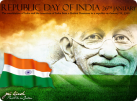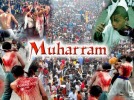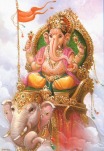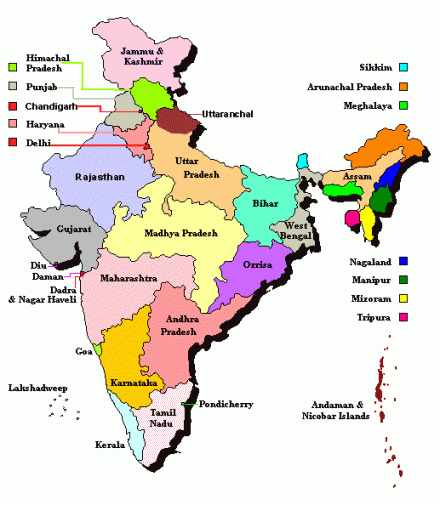Jalsa Tours & Travels
India in Nutshell
The history of India dates back to 5000 years back when India's first major civilisation flourished along the Indus River valley. The Indus civilization at one point of time extended nearly a million square kilometres across the Indus river valley and existed at the same period as the ancient civilizations of Egypt and Sumer but far outlasted them. Aryans came around 1500 BC and were mainly responsible for collapse of Indus Valley civilisation. The Four Vedas or the important books of Hinduism/India were compiled in this period.
The modern India got its independence from Britain in 1947 after a long struggle led mostly by Mahatma Gandhi. However, the country was divided into two countries, in the process of becoming independent. Post independence, India has made huge progress inspite of great problems, and has developed its industry and its agriculture, and has maintained a system of government which makes it the largest democracy in the world.
In a country as diverse and complex as India, it is natural to find that people here reflect diverse culture, traditions and values and the rich glories of the past, habits and food that will always remain truly Indian. Ethnically Indians speak different languages, follow different religions, eat the most diverse varieties of food all of which add to the rich Indian culture. Vibrant Indian cities are home to world-renowned temples and palaces, while the tranquil coast offers the perfect recipe for rest, recuperation and a sense of peace. A lot of festivals like Diwali, Holi, Id, Christmas, Mahaveer Jayanthi are all celebrated by sharing sweets and pleasantries with family, neighbours and friends.
The modern India got its independence from Britain in 1947 after a long struggle led mostly by Mahatma Gandhi. However, the country was divided into two countries, in the process of becoming independent. Post independence, India has made huge progress inspite of great problems, and has developed its industry and its agriculture, and has maintained a system of government which makes it the largest democracy in the world.
In a country as diverse and complex as India, it is natural to find that people here reflect diverse culture, traditions and values and the rich glories of the past, habits and food that will always remain truly Indian. Ethnically Indians speak different languages, follow different religions, eat the most diverse varieties of food all of which add to the rich Indian culture. Vibrant Indian cities are home to world-renowned temples and palaces, while the tranquil coast offers the perfect recipe for rest, recuperation and a sense of peace. A lot of festivals like Diwali, Holi, Id, Christmas, Mahaveer Jayanthi are all celebrated by sharing sweets and pleasantries with family, neighbours and friends.
Weather
India experiences at least three seasons a year, Summer, Wet (or "Monsoon") and Winter, each of which can vary in duration from north to south. The heat starts to build up on India's northern plains from around February, and gradually summer hots up by April or May and is at its peak in June. In central India temperatures of 45°C and above are commonplace. Even South India also becomes uncomfortable during summer season.
The first signs of the monsoon (rainy season) are visible in some areas of India as early as in the early part of May. It rains heavily when the monsoon finally arrives around 1 June in the extreme south and later sweeping north to cover the whole country by early July. The season as well as the phenomenon that causes it is called the monsoon. There are two of them, the Southwest and the Northeast, both named after the directions the winds come from.
Around October the climate starts becoming cooler and most of the northern cities become crisp at night in December. In the far south, the temperatures are comfortably warm rather than hot, since it never gets cool there. November to January is the winter season. There is also a brief spring in February and March, especially in North India.Paragraph.
The first signs of the monsoon (rainy season) are visible in some areas of India as early as in the early part of May. It rains heavily when the monsoon finally arrives around 1 June in the extreme south and later sweeping north to cover the whole country by early July. The season as well as the phenomenon that causes it is called the monsoon. There are two of them, the Southwest and the Northeast, both named after the directions the winds come from.
Around October the climate starts becoming cooler and most of the northern cities become crisp at night in December. In the far south, the temperatures are comfortably warm rather than hot, since it never gets cool there. November to January is the winter season. There is also a brief spring in February and March, especially in North India.Paragraph.
Festivals & Events
Indian celebrate a huge number of festivals, most of them highly spectular and filled with colours. Therefore, it is a huge task to list all of them over here. However, given below is the list of some prominent festivals & events of India.
Republic Day

The Republic Day of India is a national holiday of India to mark the adoption of the Constitution of India and the transition of India from a British Dominion to a republic on January 26, 1950.
Holi

The festival of colour is celebrated some time during the month of February/March It marks the beginning of spring and is one of the most colourful Hindu festivals in the north of India. People throw coloured water and powder to each other.
Muharram

The 10-day Shi'ite festival, also celebrated in February/March, commemorates the martyrdom of the Prophet Mohammed's grandson. It's marked by a grand parade in which participants scourge themselves with whips in religious fervour.
Kumbh Mela

This huge festival commemorates an ancient battle between suras (gods) and asuras (demons) for a pitcher (kumbh) containing the nectar of immortality. During the fight for possession, four drops of nectar fell from the pitcher and landed in Allahabad, Haridwar, Nasik and Ujjain. The mela is held every three years rotating through these four cities.
Ram Navami

This huge festival commemorates an ancient battle between suras (gods) and asuras (demons) for a pitcher (kumbh) containing the nectar of immortality. During the fight for possession, four drops of nectar fell from the pitcher and landed in Allahabad, Haridwar, Nasik and Ujjain. The mela is held every three years rotating through these four cities.
Independence Day

Indians on August 15 every year celebrate the birth of independent India.
Rath Yatra

The procession in Puri, every year in June/July involves the temple car of Lord Jagannath making its annual journey, pulled by thousands of eager devotees.
Ganesh Chaturthi

Celebrated widely, but with particular enthusiasm in Mumbai and Pune is dedicated to the popular elephant-headed god, Ganesh. Festivities go on for 10 days during which the idol of Ganesha (or Ganpati) is worshipped at homes and every street corner. On the tenth day (or earlier in some cases) it is ceremonially immersed in the sea or a lake after being taken out in a lavish procession.
Gandhi Jayanti

October 2, birthday of Mahatma Gandhi is a National holiday, every year.
Dussehra & Durga Puja

September/October is the time to witness the Dussehra and Durga Puja Festivals, which are celebrated almost all over in India, but is perhaps at its most spectacular in West Bengal, Kullu, Mysore, and Ahmedabad.
Diwali -

The festival of lights is the happiest festival of the Hindu calendar and is celebrated over five days in October/November. Sweets, oil lamps and firecrackers all play a major part in this celebration in honour of a number of gods. Fall some time in October/November every year.
When to Go
The best time to visit India is during October to first week of March. This is the period when climate is relatively cooler as compared to other part of the year.
Travel Guide to India-Recommended Tour Packages
Refer to Itenary Section which provides the tour packages for the best travel destinations in India.
Disclaimer
We've tried to make the information on this web site as accurate as possible, but it is provided 'as is' and we accept no responsibility for any loss, injury or inconvenience sustained by anyone resulting from this information guide. You should verify critical information (like visas, health and safety, customs and transportation) with the relevant authorities before you travel.
Jalsa Tours & Travels

B-2, Rama Bhuvan, N.S. Road,
Next to Mehta Dairy, Mulund (West),
Mumbai - 400080, India
( +91 (0) 22 - 2591 0500 (direct)
( +91 (0) 22 - 2591 0700 (direct)
( +91 (0) 98670 51427 (Sweta Dedhia)
( +91 (0) 90291 80338 (Sweta Dedhia)
( +91 (0) 99203 10093 (Nayan Chheda)
Next to Mehta Dairy, Mulund (West),
Mumbai - 400080, India
( +91 (0) 22 - 2591 0500 (direct)
( +91 (0) 22 - 2591 0700 (direct)
( +91 (0) 98670 51427 (Sweta Dedhia)
( +91 (0) 90291 80338 (Sweta Dedhia)
( +91 (0) 99203 10093 (Nayan Chheda)

